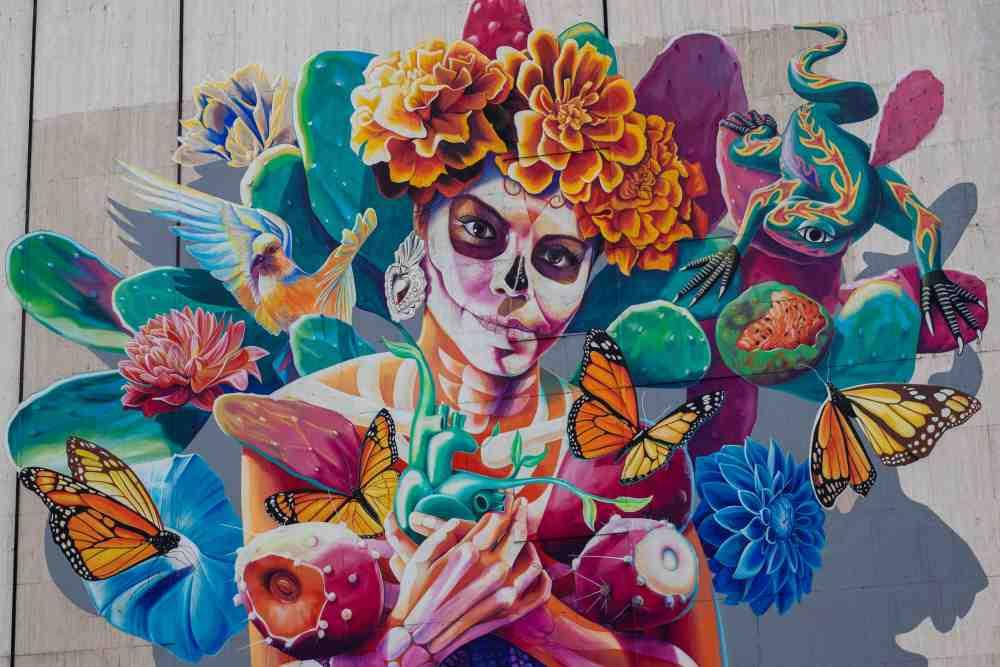The Spanish culture in Latin America is full of rich traditions, festive holidays, and tantalizing superstitions. If you’re interested in learning Spanish, exploring Latin culture is a great way to improve your language skills. Prepare for a fascinating journey full of historic gems and fiestas!
There is a diverse landscape of Latin holidays celebrated around the globe. That’s because every Spanish-speaking country has its own traditions which can span back hundreds – or even thousands – of years. Throughout Latin America and Spain, you’ll find no shortage of reasons to celebrate.
If you’re taking Spanish lessons, learning the language will enable you to dive deeper into these traditions and communicate with the communities that celebrate them. Imagine asking a friend to share their own memories of Carnival or of smacking the piñata as a kid!
This list will dive into some of the most popular Latin holidays and traditions. Use it as a starting point to a deeper dive into the Spanish culture in Latin America and beyond.
Click through this table of contents if you’re looking for something specific for customs in Spanish:
- Spanish Traditions
- Mexican Traditions
- Christmas Traditions
- Holiday Traditions
- Spanish Customs
- Superstitions
Spanish Traditions
Piñatas
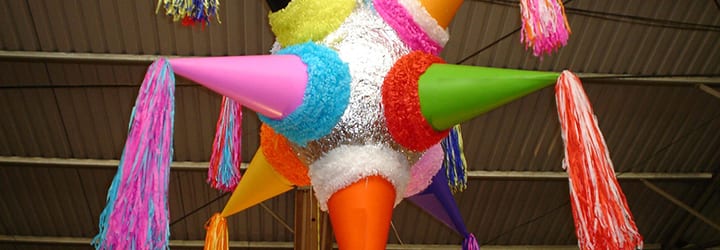
You may have already seen cardboard piñatas decorated in brightly colored paper-mâché at childrens’ birthday parties. Blindfolded participants try to hit the piñata with a stick, to break it open and spill out fruits, candies, and other treats hidden inside.
There’s a lot of speculation about the true origin of the piñata. Some believe they originated in China, in animal shapes like cows and oxen. Other reports claim that piñatas originated in Mexico with the Aztecs and Mayans, and were originally clay pots made in the shape of the gods.
When piñatas first came to Spain, the first Sunday of Lent was called the “Dance of the Piñata.” While the first piñatas in Spain were made of clay, decorations and bright colors were eventually added to the design.
Even though the history of the piñata has spiritual significance, modern-day piñatas are mainly used for games during parties and celebrations. It’s also one of the most widely popular Mexican traditions.
Quince Años
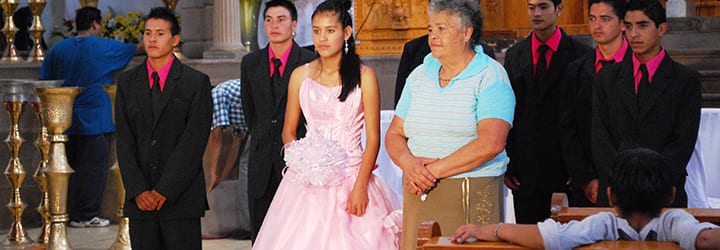
For girls in Hispanic countries, the 15th birthday signifies a coming of age. The family throws a big party, called a Quinceañera, which begins with a Misa de acción de gracias, or giving thanks for completing childhood.
The festejada (birthday girl) wears a formal dress and receives gifts from family members. Common Quinceañera gifts include tiaras, bracelets, and earrings.
A traditional Quinceañera begins with a church ceremony, followed by a party with food, music, and dancing. This is also one of the most common Mexican traditions.
Carnival

In Spanish-speaking countries, Carnival celebrations are held between late January to early March, the time leading up to Lent.
Carnival is generally recognized as the final chance to celebrate before Lent. There are many festivities, including dancing and music, throughout the day and night. Spanish traditions for carnival also include dressing up and wearing masks.
SEE ALSO: 50 Interesting Facts About Spain traditions
Mexican Tradition
Día de la Virgen de Guadalupe

Devout Catholics in Mexico make a pilgrimage to the Basilica de Guadalupe in Mexico City every year on December 12th. The date commemorates the appearance of the Virgin Mary to Juan Diego in 1531.
According to the story, no one believed that Juan Diego had seen the Virgin and asked him to return with proof. The Virgin reappeared and told Juan Diego to collect flowers in his coat.
He returned to see the archbishop of Mexico City and dropped the flowers. A miraculous picture of the Virgin had formed on the material, which today is displayed in the Basilica. Many Mexican traditions, such as this one, have religious significance.
Día de la Independencia

Dia de la Independencia (Mexican Independence Day) falls on September 16th, but begins the night before when the President of Mexico rings the bell at the National Palace in Mexico City and shouts “Viva México!” This is one of the most widely celebrated Mexican traditions.
There is a national military parade every year on September 16th. To celebrate Mexico’s independence from Spanish rule, people decorate their homes, dress in the colors of the flag, throw confetti, and hold parties where they feast on traditional foods.
San Judas Tadeo
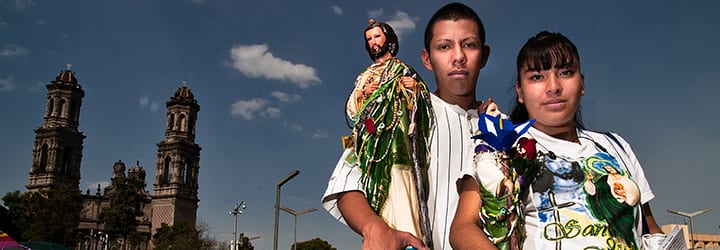
This is another one of the many Mexican traditions with spiritual significance. San Judas Tadeo (St. Jude Thaddeus) is known as the Saint of Lost Causes. On the 28th day of every month, people gather at San Hipólito Church, the church dedicated to St. Jude in downtown Mexico City.
People bring icons and statues of St. Jude, and ask for his blessing and help in difficult circumstances. The same events are held every October 28th, which is St. Jude’s saint’s day.
Traditions in Spanish Christmas
Posadas

Originally Spanish Christmas traditions, Posadas are now also Guatemalan and Mexican traditions. In Spanish, posada means “inn,” and in Mexico, people hold candles and sing songs as they reenact Mary and Joseph’s search for shelter in Bethlehem.
Christmas Posadas last from December 16 until Christmas Eve.
Nochebuena
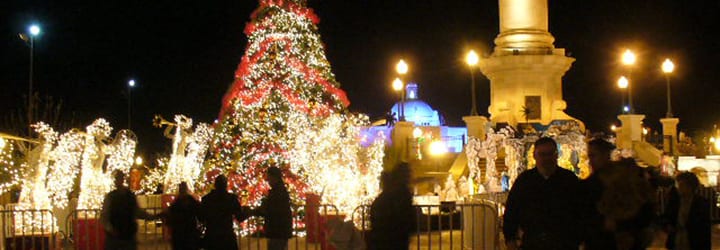
Nochebuena (“the Good Night”/Christmas Eve) is a family event, celebrated with a feast. Traditionally, families would have lechón (pork) for dinner on Nochebuena, but in more recent times, the meal varies depending on the region.
Dinner generally incorporates music and gifts, and many families also attend Misa del Gall0 (Midnight Mass) on Nochebuena.
Misa del Gallo

Another one of the religious traditions in Spain, the midnight mass on Christmas Eve is called Misa del Gallo (The Mass of the Rooster). This event is known as The Mass of the Rooster because it’s believed that a rooster crowed at midnight the day that Jesus was born.
In Spain, attendees first light small oil lamps in their home before setting out to the church. In Bolivia, people only eat after mass, usually a traditional dish of picana de pollo, a chicken stew with carrots, peas, and potatoes.
Reyes Magos
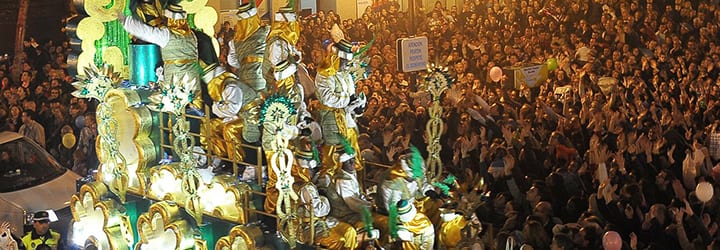
Reyes Magos (Three Kings Day) starts on January 5th with a reenactment of the arrival of the Three Kings. The Spanish Christmas tradition features a parade, Cabalgata de los Reyes, where the Three Kings arrive on horseback or on decorated floats and throw treats and presents to the children.
Before bed that evening, children leave goodies for The Kings and leave their shoes out for The Kings to fill with presents.
Spanish Holidays
Día de los Muertos

In Hispanic cultures, it’s important to remember family members and friends who have passed. Día de los Muertos is a particularly significant holiday in Mexico, where it’s observed on November 1st and 2nd.
Mexican traditions for Día de los Muertos combine Catholic elements with Aztec rituals. People create altars in their homes with photos, foods, and other objects that have some link to the deceased.
They also visit the graves of their loved ones, where they may spend hours or even the entire day. Art related to the holiday depicts skeletons enjoying life on the other side.
Semana Santa
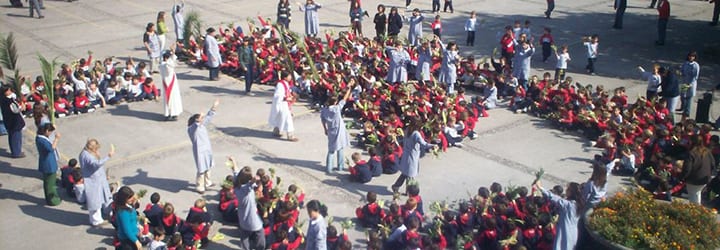
Semana Santa (Holy Week) runs from Palm Sunday to Easter Sunday and is one of the most important events of the year in Catholic countries.
While all of Mexico celebrates Semana Santa, different regions have different events. Many Semana Santa celebrations include cascarones (colored egg shells), church services, and the Passion Play – the reenactment of the “Passion of the Christ.”
Spanish Customs
Las Serenatas

One of the more romantic traditions in Spain, this unique custom involves hiring a band of mariachis, or arriving with a group of friends, to play music below a lover’s window.
Traditionally, the recipient of the serenata keeps the light off during the first song, turns the light on for the second, and comes out to the balcony (or at least opens the window) for the third song.
“Provecho”
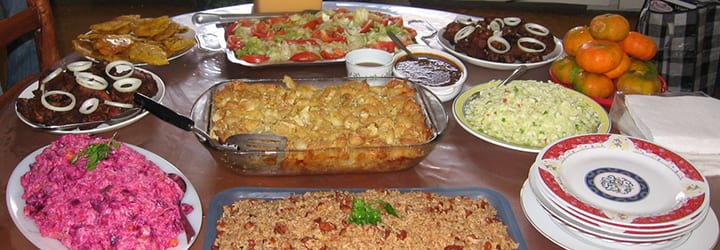
This is the Hispanic tradition or custom of wishing someone a good meal. It’s similar to “bon appétit” in French, but it’s not restricted to fine dining.
You can say “provecho” when you sit down to a meal with family or friends, or you can use it in passing, if you see someone you know who is about to eat.
RELATED: 20 Easy Spanish Words and Phrases
Siestas

A siesta, or afternoon nap/rest (between 2 p.m. and 5 p.m.) is one of the classic traditions in Spain and other Hispanic countries. It’s also one of the most envied traditions throughout the globe!
The three-hour siesta doesn’t necessarily mean nap time for everyone. Some people will take a long lunch, while others will use the break to spend time with their family.
“La Mordida”

“La Mordida“ is one of the Mexican traditions for birthdays.
While friends and family sing “La Mordida,” the birthday boy or girl must take a bite of birthday cake without using his or her hands. This generally results in a face full of cake.
Spanish Superstitions
Latin culture also has its own unique superstitions that are passed done through family generations.
Mal de Ojo

There’s a great fear of the mal de ojo (evil eye) in some Hispanic traditions. The superstition dates back to medieval Europe and the belief that a look can curse people, or cause children to become ill.
There are different remedies, like amulets and bracelets, for mal de ojo, and some more specific cures in different regions. For example, in Central America, people believe that mal de ojo can be cured by rubbing around the eye socket with an umbilical cord.
La Mal Sal

La mal sal means bad salt or bad luck. Many people refuse to take a saltshaker, when it’s handed to them, as this is seen as receiving someone’s bad luck. Instead, you must place the salt shaker on the table, within reach of the person who wants it.
Sweeping Over Feet

Some Hispanic traditions say that if you sweep over someone’s feet, that person will never marry.
Also, it is believed that leaving an upside down broom behind your door can ward off unwanted visitors.
Cutting Babies’ Hair
You may want to think twice before cutting your baby’s hair. According to Spanish superstitions, cutting a baby’s hair before he or she learns to walk, will prevent him or her from learning to do so.
Also, if you want your son or daughter to learn to speak in Spanish, do not cut his or her hair before they turn one.
If you want to experience these Spanish traditions firsthand, consider taking a trip to a Spanish-speaking country. You’ll be amazed at just how rich Latin culture is when you see it in person. The more Spanish practice you have before your trip, the greater your enjoyment will be, so consider taking some free online Spanish classes before your trip.
Your ability to appreciate traditional cultures in Spanish will only deepen as you learn more about the language. You’ll discover new vocabulary and get to practice your listening comprehension skills when you listen to the traditional stories told throughout Spanish culture, in Latin America, and in Europe.
Online lessons make it possible to connect with a native Spanish speaker from anywhere in the world and learn the language in the fastest way possible. You can even ask your teacher about the Latin holidays they celebrate in their own culture!
Do you know of any other customs or traditions in Spain? Share them with us in the comments below!
Maile Proctor
